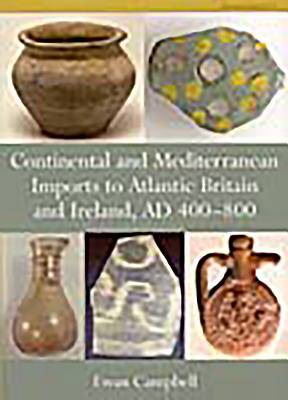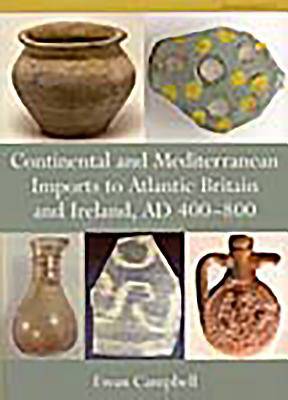
- Afhalen na 1 uur in een winkel met voorraad
- Gratis thuislevering in België vanaf € 30
- Ruim aanbod met 7 miljoen producten
- Afhalen na 1 uur in een winkel met voorraad
- Gratis thuislevering in België vanaf € 30
- Ruim aanbod met 7 miljoen producten
Zoeken
Continental and Mediterranean Imports to Atlantic Britain and Ireland, Ad 400-800
Ewan Campbell
€ 104,45
+ 208 punten
Omschrijving
From the 5th to 8th centuries AD there was a flourishing trade network linking the Atlantic coasts of Britain and Ireland to the Mediterranean and north-west Europe, bringing imported pottery and glass as well as new ideas from these areas. New material is often found in rescue excavations, and it is now recognised that imports from Europe and the Mediterranean are more widespread and more diverse than previously believed. This is the first comprehensive account of this material, and is linked to an online database. Around 1000 vessels from 150 sites are described, including fine tablewares, drinking vessels and transport containers for luxuries such as dyestuffs, nuts, wine and olive oil. Finds from some of the most significant sites from this era, including Tintagel, Dinas Powys, Whithorn and Dunadd, are discussed. The imports reveal aspects of early medieval society which are otherwise dealt with sparsely in the historical record, including contacts with the Byzantine Empire and Merovingian France. It is argued that trade was controlled from a few key sites with royal characteristics, where wealth was accumulated and used to produce elaborate jewellery. Analysis of the imports gives new insights into the growth of royal power at this formative stage of Insular early medieval states.
Specificaties
Betrokkenen
- Auteur(s):
- Uitgeverij:
Inhoud
- Aantal bladzijden:
- 163
- Taal:
- Engels
- Reeks:
- Reeksnummer:
- nr. 157
Eigenschappen
- Productcode (EAN):
- 9781902771731
- Verschijningsdatum:
- 31/12/2007
- Uitvoering:
- Paperback
- Formaat:
- Trade paperback (VS)
- Afmetingen:
- 212 mm x 292 mm
- Gewicht:
- 766 g

Alleen bij Standaard Boekhandel
+ 208 punten op je klantenkaart van Standaard Boekhandel
Beoordelingen
We publiceren alleen reviews die voldoen aan de voorwaarden voor reviews. Bekijk onze voorwaarden voor reviews.








